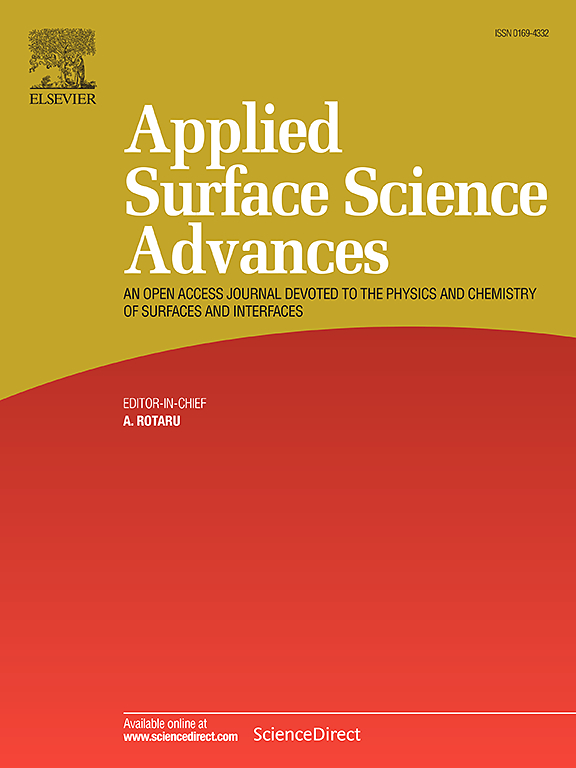Influence of solute doping on nanotwinning, texture, and properties of Co-sputtered Ag–Cu alloy thin films
IF 8.7
Q1 CHEMISTRY, PHYSICAL
引用次数: 0
Abstract
Silver (Ag) and copper (Cu) are widely used in interconnect applications due to their excellent electrical and thermal conductivities. Both metals can form twin structures, which contribute to enhanced mechanical strength, low resistivity, and high thermal stability. To further improve hardness while maintaining functional performance, this study explores the effects of solute doping in Cu-doped Ag and Ag-doped Cu alloy thin films using a combination of density functional theory (DFT) calculations and co-sputtering deposition. The results reveal that doping reduces the stacking fault energy (SFE) in both systems, thereby influencing twin formation and microstructural evolution. In Cu-doped Ag films, increased doping concentrations significantly reduce SFE, promoting the formation of dense nanotwins and a strong (111) crystallographic texture. In contrast, Ag-doped Cu films exhibit more random microstructures and weaker texturing, primarily due to the limited solubility of Ag in Cu. Solute doping also introduces lattice distortions, leading to residual stress variations, grain refinement, and reduced surface roughness. Notably, Cu-doped Ag films with 4.7 at. % Cu exhibit a surface roughness of ∼5 nm and nearly double the hardness of pure Ag, while maintaining a moderate increase in resistivity (∼50 %). These improvements are attributed to solid solution strengthening, twin formation, and inhibited atomic mobility during growth. The combined enhancements in hardness, texture, and surface smoothness make solute-doped Ag–Cu alloy thin films promising candidates for metal-to-metal direct bonding and hybrid bonding in advanced electronic packaging applications.
溶质掺杂对共溅射Ag-Cu合金薄膜纳米孪晶、织构和性能的影响
银(Ag)和铜(Cu)由于其优异的导电性和导热性而广泛应用于互连应用。这两种金属都可以形成孪晶结构,这有助于提高机械强度、低电阻率和高热稳定性。为了在保持功能性能的同时进一步提高硬度,本研究采用密度泛函理论(DFT)计算和共溅射沉积相结合的方法,探讨了溶质掺杂对Cu掺杂Ag和Ag掺杂Cu合金薄膜的影响。结果表明,掺杂降低了两种体系的层错能(SFE),从而影响了孪晶的形成和微观组织的演化。在cu掺杂的Ag薄膜中,增加的掺杂浓度显著降低了SFE,促进了致密纳米孪晶和强(111)晶体织构的形成。相比之下,Ag掺杂的Cu薄膜表现出更随机的微观结构和更弱的织构,这主要是由于Ag在Cu中的溶解度有限。溶质掺杂还引入晶格畸变,导致残余应力变化、晶粒细化和表面粗糙度降低。值得注意的是,掺cu的Ag薄膜具有4.7 at。% Cu的表面粗糙度为~ 5 nm,硬度几乎是纯Ag的两倍,同时电阻率保持适度增加(~ 50%)。这些改进是由于固溶体强化、孪晶形成和生长过程中原子迁移率的抑制。硬度、质地和表面光滑度的综合增强使溶质掺杂Ag-Cu合金薄膜有望成为先进电子封装应用中金属间直接键合和混合键合的候选者。
本文章由计算机程序翻译,如有差异,请以英文原文为准。
求助全文
约1分钟内获得全文
求助全文

 求助内容:
求助内容: 应助结果提醒方式:
应助结果提醒方式:


